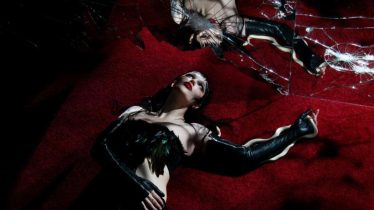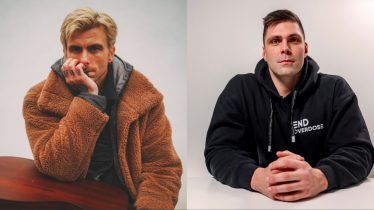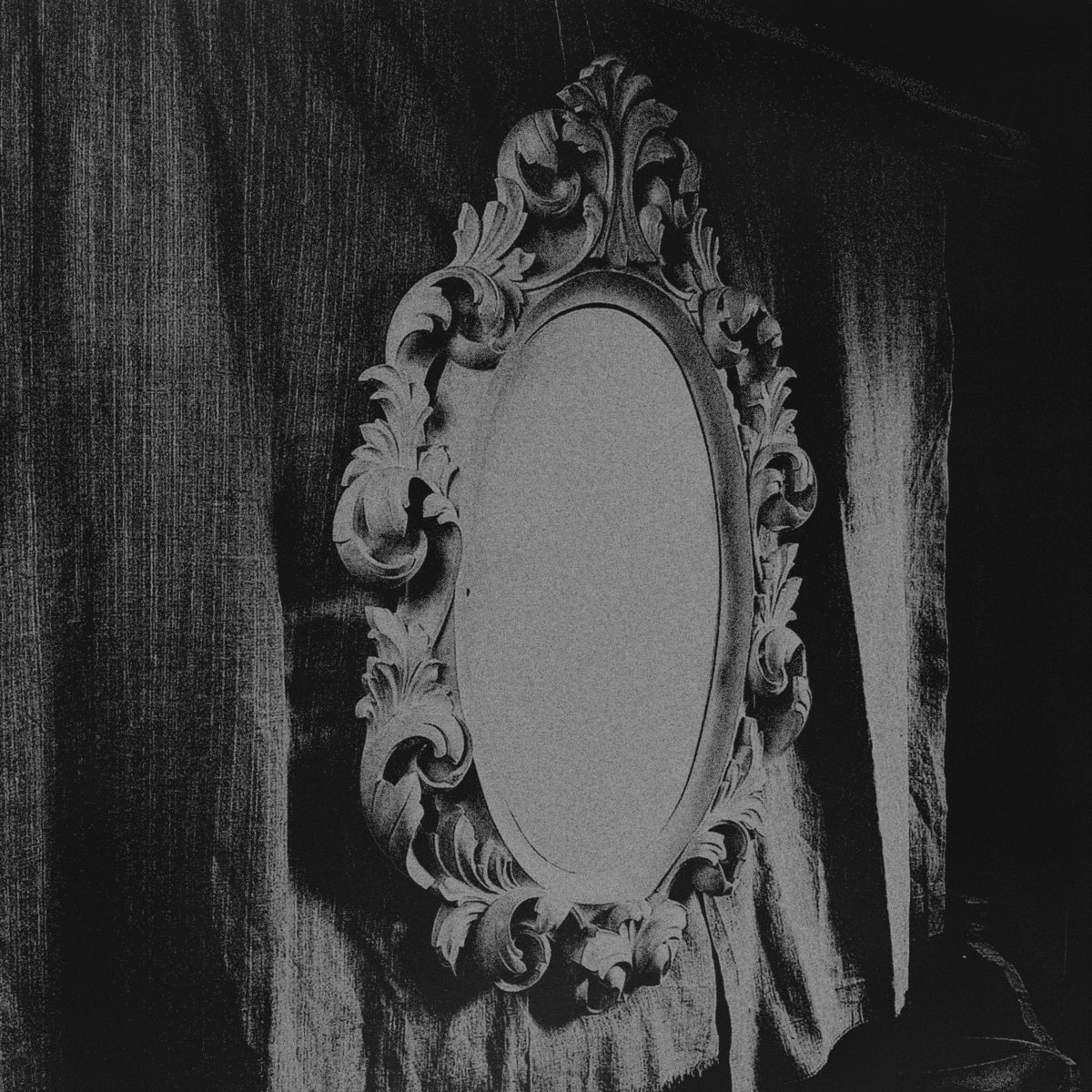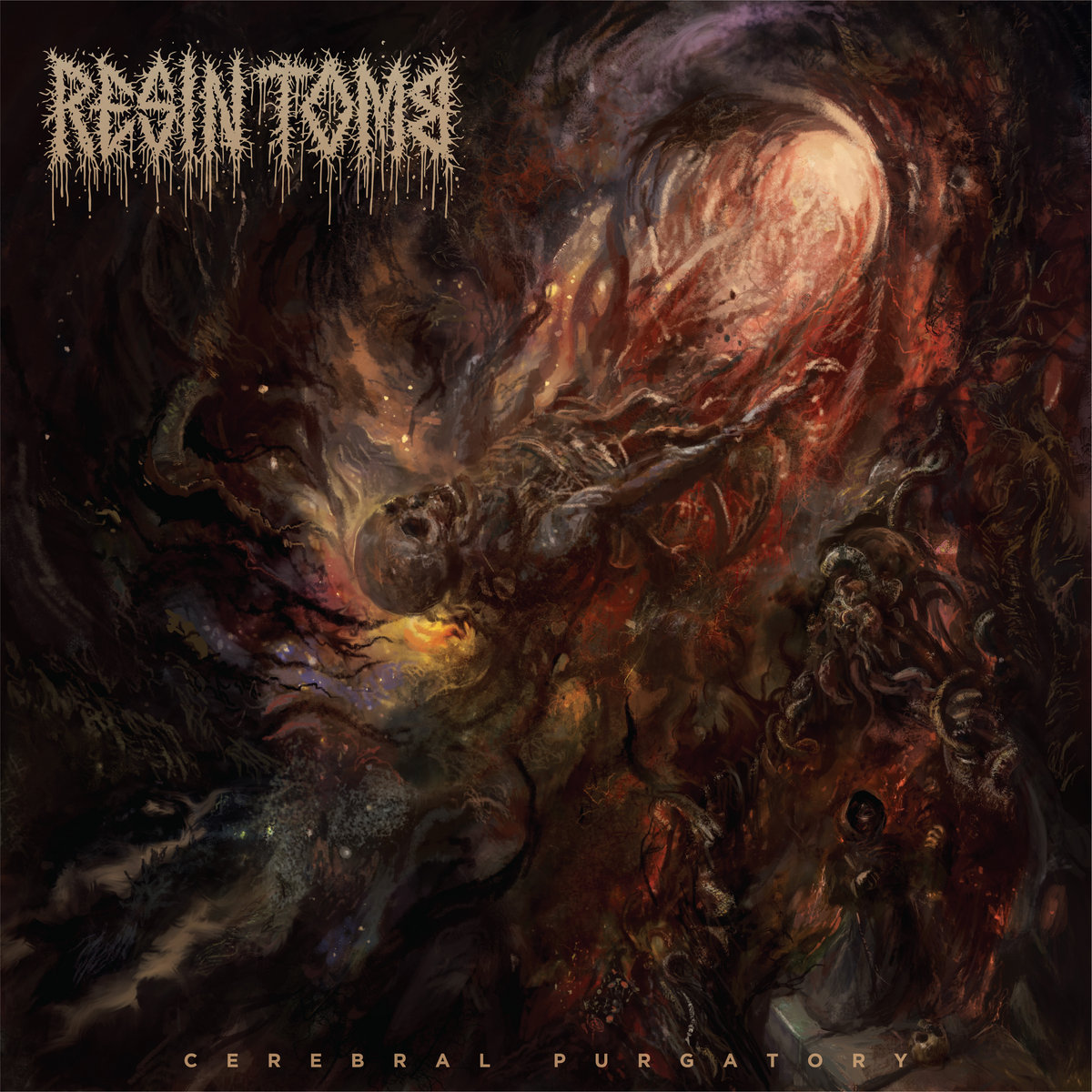Early days of Metallica, Slayer, Megadeth featured in new book 'Murder In The Front Row'
While the average AltPress.com reader may not be old enough to remember the burgeoning metal scene that existed in California's Bay Area in the early 80s, chances are good some of your favorite bands do–countless contemporary metal acts count bands like Metallica and Slayer among their influences, and even if they don't, plenty of them grew up listening to it (Looking in your direction, Gerard Way. You too, Andy Biersack.)
Murder In The Front Row is a thick, beautiful book that captures a special moment in time–the period before, and leading up to, the explosion of thrash metal's popularity in the United States. The Bay Area was the epicenter of the madness, and co-authors Harald Oimoen and Brian Lew were there to experience all of it. In addition to new essays from the authors and other contributors, the book also features rare excerpts from fanzines of the day, plus a massive amount of never-before-seen early photographs (most of them taken by the authors themselves) of the genre's heavy hitters–Metallica, Megadeth, Slayer, Exodus, Anthrax and more–before they became the voices of a generation. AP spoke to Lew via telephone from San Francisco about the book, the scene and why it still matters today.
Interview: Bryne Yancey
Can you talk a little bit about the conception of the book? How long did it take to compile? Were there any problems or snags in the way? How many years in the making was it?
Do you want to go back to how it all came together?
Most definitely.
It all starts with Harald [Oimoen] and I. Harold and I have known each other since we were teenagers. We met at some of the early shows. We both happened to be taking pictures and that’s basically how we became friends back in the early ‘80s. Fast forward to—I guess the process of the whole book took a year and a half with Bazillion Points. There’s been a lot of full circle moments with our lives around this book. In the case of the book, Harald had been in contact with Bazillion Points and Ian Christie of Bazillion Points was familiar with Harald’s photos.
He also was familiar with me because I have a metal/pop culture blog and Ian had been reading it and he knew my history with the Bay Area metal scene. Ian suggested we do the book together, which was really cool because Harald and I really haven’t been in touch in recent years. As well as putting the book together, we’ve become friends again, so that’s been really cool.
It was basically a year and a half process. To be honest, it was extremely smooth. It was like, back in the day in the early ‘80s we were following several metal zines and the metal fanzines in the early ‘80s were a lot like the punk fanzines [in that they] always being just a bunch of kids that Xeroxed the zines and we did the cut and paste thing because it was before desktop publishing. Putting the book together—the vibe was exactly like that. It was really amazing.
I have to credit Bazillion Points with most of it because the thing with Bazillion Points and Ian Christie is that they’re so passionate about the projects that they pick and they’re very informed about them. Ian is like a music historian. Not just metal, but punk and films and everything. He really focused the project. I’ve had other friends do book projects in the past and I’ve just heard all the horror stories where they’ve gotten in with a bad agent and the publishers have taken over and edited their vision heavily and that was not the case with Bazillion Points. They made very, very astute observations about what we were doing and suggested things, but to be honest, the book that came out is basically the vision that Harald and I thought it would be, which is pretty amazing.
You mentioned the whole fanzine culture that was so prevalent back then. It still exists in some form, but it’s not as prevalent as it once as with modernization and the Internet–anybody can have a webzine now. What was so enticing about doing the zines back then? How do you feel about the modernization of it as it exists today?
I’m not sure how well known the early ‘80s metal underground is to a lot of people. The punk underground and the punk scenes are so well-documented for whatever reasons—I guess there were more filmmakers in the scene or whatever—but in the early ‘80s, and not just in the Bay Area, but there were metal fanzines in Los Angeles—Brian Slagel, before he started Metal Blade, had a fanzine—but it all started in Europe.
There were fanzines in Germany, France, and England. Metal Forces is the most well-known of them, but basically those fanzines started to show up in our import record stores—at least in the Bay Area—and it was eye-opening because here we had Metal Mania and that was the sounding board for the Bay Area scene, but as these fanzines from other parts of the world started filtering to us, it was really eye -opening because it was before the Internet and even in a big city you didn’t really know what was going on.
To see these fanzines from Germany, even though we couldn’t read through them, they had articles about some of the bands we were into. For me personally, it was like my first real geography lesson. It was more profound than any geography lesson I had in school because I learned where these countries where, but the fact that there were like-minded people in all these other places was really inspiring and mind-blowing. At the same time, we were very passionate about metal. We were serious about the music, but we weren’t serious about life yet.
To be honest, a lot of us original metal fans, we were dorks. We were just nerds. We didn’t know how to talk to girls and we were into science fiction. That’s the time-honored cliché, but we had all this energy and all this passion about the music and we needed to direct it somewhere. That’s where the same friends and I who got into the zine things, that’s where our drive came from. We were so passionate about these bands and the music and the scene and the camaraderie and wanting to feel a part of something. I think that’s with any music scene where it starts in the underground. It starts with these nerdy kids who have this passion for music that no one else even knows or cares about.
Nowadays, it’s kind of cool that anybody can have a blog. All these kids who are always going to be like this—there’s always going to be these outcast, nerdy kids who don’t feel like they’re a part of something and they can do that. It’s so easy now. On the flipside, it’s different now because it’s so easy to do, I think it’s just the nature of technology now where it’s sort of homogenized in a lot of ways. At least back in the old days, you could tell when a fanzine wasn’t from where you were. It had a localized feel. We’d do our fanzine here in San Francisco, but then we’d see a fanzine from New York and it just had a totally different look and vibe and voice. I think just the nature of technology where it does connect everybody now [factors into it], but maybe some of the localizations might not be there as much as it used to be with fanzines.
In the book, you talk a lot about the sense of community that was going on at that time, how close-knit it was among the scene and how everyone gained friends and all. How do you think that’s changed over the years? Has it eroded at all?
The Bay Area is still the Bay Area. To be honest, I still go to a lot of metal shows locally. There’s a lot of kids and the vibe is still the same. I get the sense that most of the kids going to shows still are there for the music. It’s not like a hipster, indie rock show where I think a lot of people going to see certain bands are just there just to be there. I still get the sense that at most underground metal shows, the kids are there for the music. Then again, I think it’s the nature of the world we live in. Everybody is connected by the internet, so I don’t really know if the scene is that local anymore.
I can only speak from when I was growing up, but you had to leave the house to be a part of the scene. You went to the record store. In San Francisco, there was a store called The Record Vault and that was basically the epicenter for the Bay Area metal scene. It wasn’t just a record store that carried metal records—the owners were fans. They were huge Motörhead fans. They would make bootleg shirts of all the underground European bands we were reading about. It was like a clubhouse more than a record store. Before shows in San Francisco, we’d go to The Record Vault to meet up with our friends since we weren’t old enough to go to bars. That sense of community and just having face time with people at that time, that’s what built that sense of community.
Fast forward to now and this past Sunday we had our first author event for Murder with Harald and I. We had it at this little bookstore in Oakland. It was posted on Facebook and the usual ways you advertise now. We didn’t know what to expect, but it turned out to be, for one afternoon, just like the old days. All these old friends who we hadn’t seen in a long time came and brought their kids who are into metal now. There were people there who just wanted the book or just liked the book. For one afternoon, that community vibe from the old scene was really alive.
If you go on the Murder In The Front Row Facebook page, there’s a bunch of photos posted from it. I think you can get the sense of the vibe. The sense of community was there. I can only speak for the Bay Area, but I think on a certain level, it is still there. As long as the kids aren’t just sitting in their rooms on chat boards talking about these bands and actually going out and meeting each other and getting that sense of community face-to-face. I think a metal scene can be like that again.
There’s a real sense of history when you read the stories in this book and when you look at these photos. It obviously wasn’t in your thoughts then, but how do you feel when you look at those photos now? Are you able to detach yourself from the whole thing at all?
Personally, I think working on this project really did allow me to step back. A lot of Harald’s photos have been used in places and are somewhat iconic, especially his older Metallica ones, but as far as my photos, they’ve been around my life for so long where there was a good number of years where I really didn’t care about that time in my life. Life moves on, I got into other types of music and the negatives just sat in a shoebox for many years.
When this project started, one of the big things was Bazillion Points rented out a photography facility here in San Francisco and basically spent a week with Ian Christie scanning all of our negatives. Harold brought as many negatives as he had, I brought all of my negatives and a lot of the negatives, I had forgotten about. Most of my shots I’d only seen on 4×6 or 3×5 prints that had been done at Walgreens or whatever. I never had them professionally scanned or printed or anything. We were scanning on a $30,000 professional scanner and then they were pulled up onto a high definition screen, and I have to say it was like seeing a lot of the photos for the first time. There’s photos in the book that I took at Cliff Burton’s [late bassist of Metallica] first rehearsal and Cliff Burton’s first show.
Not that I took them for granted, but I think I told my wife, these always felt like family photos that you’ve seen all your life since you were a kid and you’ve seen them so many times, they’re just familiar—you kind of forget the meaning behind them. It was really cool to see my photos [in that way] for the first time and get that appreciation again. As we started putting the book together and it started to take a form and the narrative sort of took shape, I really was able to look at it. That was one thing, too, during the editing process I tried to look at the book as someone who had never seen this stuff before. I got a whole new appreciation for what is there for sure.
The readers of our website and our magazine are obviously a lot younger and don’t remember this scene at all or maybe don’t know enough about it. Pretend you were talking to them instead of me and explain to them why this scene matters how it paved the way for so many other bands that are around today that they’re probably into and recognize.
The early thrash scene, at least in San Francisco, took a lot of its inspiration from these European bands including Motörhead, Iron Maiden, even Def Leppard at the time before they became the big radio MTV band, they were very much an underground metal band and would be spoken in the same breath as Iron Maiden. That early English/European scene inspired bands like Slayer and Metallica and Megadeth. That’s sort of the period where this book takes place—that first wave of Bay Area American bands. In our case, it was Slayer, Metallica, Megadeth, and Exodus. Exodus are kind of one of the unsung heroes of that early scene in that they never really quite got there, but then again they’re still around today. That early scene went from that local scene and later in the mid to late ‘80s it became the thrash metal scene where it got the most popularity and recognition with bands like Anthrax.
Everybody has their opinion, but out of the thrash scene you could say grunge came out of it. As far as Seattle goes, having known some of the original Seattle bands–I know a lot of those guys. Even though punk is always this aesthetic that grunge is compared to, a lot of those guys were metal eads before they became punks. I’m friends with Dale Crover [of Melvins] and he told me how Kurt Cobain saw Metallica on the Ride The Lightning tour in Seattle. Those guys started in metal and punk [and that] turned into thrash, so that was the crossover and out of that probably came grunge. Fast forward and Possessed started in the Bay Area and they were one of the first death metal bands and they became really influential to the Norwegian and Scandinavian bands.
Another band [with whom] I don’t think the connection is really made is Primus came out of the Bay Area thrash scene because Larry LaLonde was in Possessed, Les Claypool was in a band called Blind Illusion who were more proggy, but they played a lot of shows with the thrash bands. They both went on to form Primus and Primus went on to influence many bands in that genre and alternative music and everything.
Out of the thrash scene, I think you can say the influence extends from Metallica to where they are now considered the biggest metal band and then all the way down to Primus and Faith No More. As far as the Bay Area goes, you can trace it back to those early ‘80s days. Then there’s this resurgence of new bands from all over that emulate the old thrash aesthetic now with bands like Warbringer and some of those bands. alt







